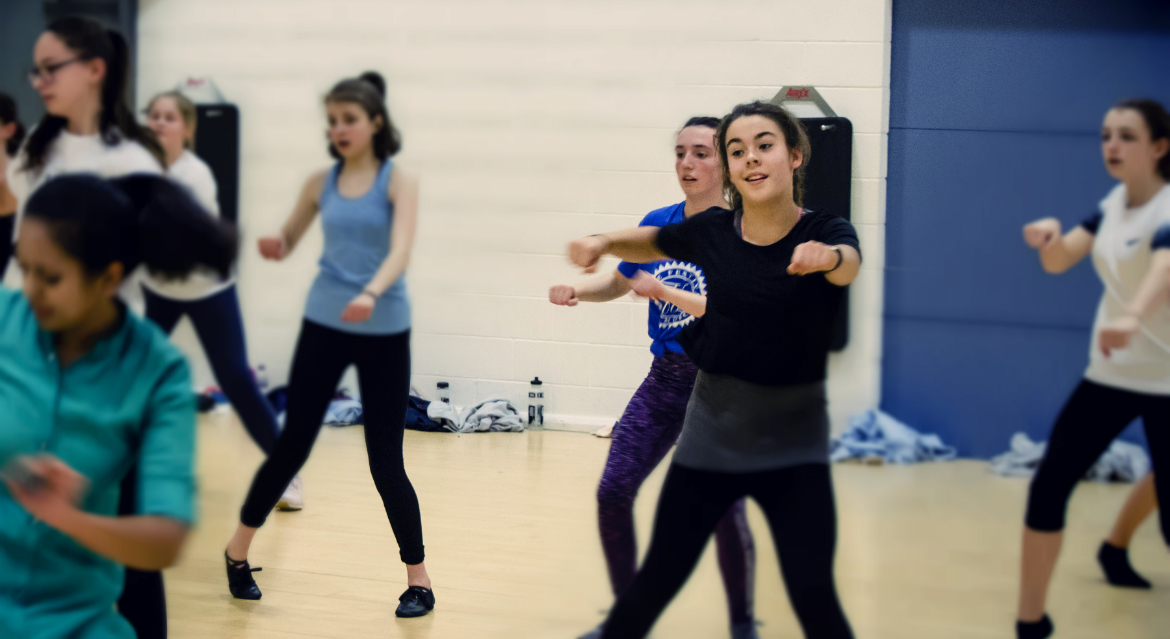A Bollywood dance a day might keep diabetes away
Published On Thu 29 Nov 2018 by Dominic Glasgow

In a novel twist, school-children from Madras College in Fife will help researchers from Madras Diabetes Research Foundation in Chennai, India and researchers at the University of Dundee to see if high-intensity interval training (HIIT) Bollywood dancing can hit the spot in a global effort to reduce the number of teenagers and young adults with type 2 diabetes in India.
More than 20 pupils from Madras College in St Andrews will join Bollywood choreographer Mr B Santosh, who has been working in the film industry in southern India for over five years, as well as researchers from Chennai and Dundee to develop a dance intervention that could be used by adolescents at-risk of diabetes and obesity across the world.
Currently, the rate of Type 2 diabetes worldwide is on the rise, with the chronic disease affecting 69 million people in India alone. Recent studies have shown that Indian adolescents, particularly girls, do not meet the World Health Organization (WHO) recommended 60 minutes of moderate to vigorous physical activity every day.
The University of Dundee is an internationally recognised centre of excellence in diabetes research, hosting over 20 research groups that include some of the world’s most cited scientists.
Last year the University was awarded £7million in funding from the National Institute of Health Research (NIHR) Global Health programme to establish a major new Scotland-India clinical partnership to combat diabetes, twinning its expertise with Dr Mohan’s Diabetes Specialities Centres and the Madras Diabetes Research Foundation in Chennai, the largest clinical network of diabetes care in India.
The project aims to compare and contrast the common and specific diabetes-related problems in both countries, with the aim of providing an improvement in health and an increase in prevention of diabetes in India and Scotland.
Dr Shona Matthew, Manager of the NIHR Global Health research team behind the project, said, “The emergence of diabetes in young age groups demands novel approaches for prevention. Diabetes results in a wide range of serious medical complications with significant implications both for the affected individual and their society. With diabetes affecting 1 in 12 in India, it’s crucial that something is done to help prevent it at its earliest stages.
“With the help of S2 and S3 from Madras College we hope to be able to offer an upbeat and inventive HIIT program which utilises Bollywood dancing as its basis. This will form part of a dance app aimed at getting girls in India to exercise through dance.”
Dr Anjana, Vice-President of the Madras Diabetes Research Foundation (MDRF), the premier research institute in south India specialising in all aspects of diabetes research, said, “Dancing has a whole host of body benefits, not just for reducing the risk of diabetes and obesity.
“The dance app we hope to develop will also increase joint flexibility and muscular endurance, as well as boosting mental well-being and alleviating stress.”
Dr. Ranjani Harish, a senior scientist at MDRF, said, “The widespread adoption of mobile phone technology in India provides the potential to completely rethink strategies for health screening in India and means with a dance-app we might be able to reach more at-risk adolescents than ever before."
Dr. Guha Pradeepa, also a senior scientist from MDRF and part of the team from Chennai, added, “This novel intervention has the potential to break the barriers to exercising among adolescent girls and we are excited to see the results.”
For media enquiries contact:
Dominic Glasgow
Media Relations Officer
University of Dundee
Nethergate, Dundee, DD1 4HN
Tel: +44 (0)1382 385131
Email: d.w.glasgow@dundee.ac.uk